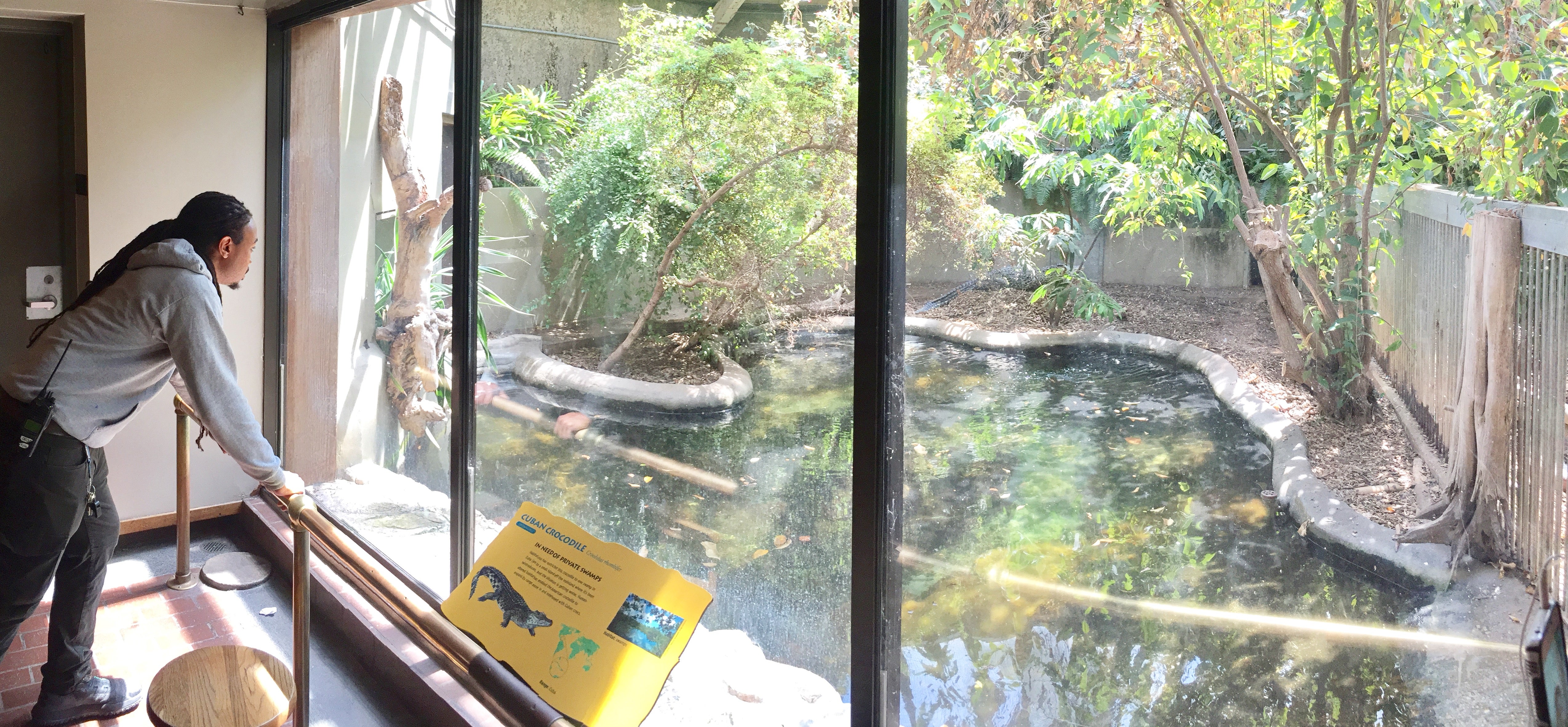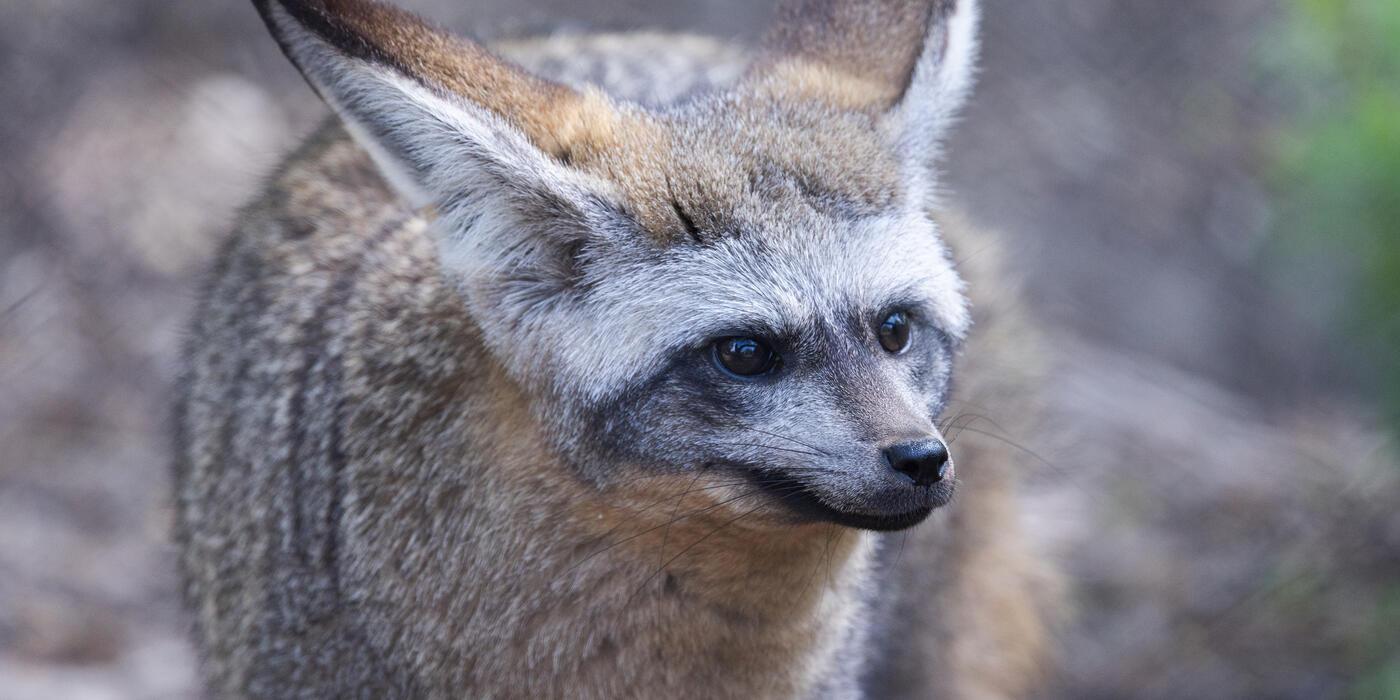8 Fascinating Facts About the Cuban Crocodile, a Rare Caribbean Predator

Invisible beneath the murky water, a hunter waits with perfect stillness.
Then…SPLASH! A thick, powerful tail launches the predator forward. Jaws filled with dagger-like teeth clamp shut onto the target. A quick toss of the muscular neck sends the meal down the hatch. Seconds later, the animal disappears back into the water, ready to repeat the process whenever the next meal is close.
This is feeding time for one of the world’s rarest aquatic reptiles: the Cuban crocodile. Found only in a tiny corner of the Caribbean, these crocs are fast, fierce, and remarkably clever.
Here’s what makes them so extraordinary:
1. They’re the most land-adapted crocodile.
Sure, they’re strong swimmers. But thanks to some handy adaptations, Cuban crocodiles are fast and agile on land. Long, sturdy legs and reduced webbing between their toes help them dig into the mud and push off, sort of like soccer cleats.
And those legs aren’t just for show — Cuban crocs are shockingly fast on land. With a bounding gait that more closely resembles a horse’s gallop than an alligator’s crawl, these crocs can dash towards prey at explosive speeds of 15 miles per hour (24 km/h). Look out!

(Mehgan Murphy/Smithsonian)
2. They are found only in western Cuba.
Once spread across the Caribbean, wild Cuban crocodiles now survive in just two places: Zapata Swamp and Isla de la Juventud.
Most of the crocs are concentrated in Zapata, the largest and best-preserved freshwater wetland in the Caribbean. More than 2,300 square miles (6,000 square kilometers) of mangrove swamps, forests, and tidal wetlands are contained within the protected biosphere reserve. Zapata is also home to dozens of rare and endangered species, including the Zapata wren, the West Indian manatee and the bee hummingbird, the world's smallest bird (which is lighter than a penny!)
3. They might hunt in packs.
Most people don’t think of crocodiles as having much of a social life. But Cuban crocodiles might understand the benefits of cooperation… at least when it comes to hunting.
A team of researchers observed a feeding group of crocodiles engaging in behavior that closely resembles coordinated hunting. More observations are needed to confirm whether this is a standard behavior, but if it’s true, it would suggest Cuban crocs possess problem-solving and social behavior skills that are virtually unheard of in reptiles.

(Skip Brown/Smithsonian)
4. They have a reputation for being extremely territorial.
Cuban crocodiles max out around 10.5 feet (3.2 meters) long – only about half the size of their saltwater crocodile cousins, which can grow to be 20 feet (6 meters) long.
But what these short kings lack in stature, they make up for in attitude. Zookeepers rank them among the most aggressive of all crocodilians, fiercely territorial and quick to defend their space against any potential threat. (Just don’t call them Napoleon.)

(Roshan Patel/Smithsonian)
5. They may be among the smartest reptiles.
It’s not only their teeth that are sharp. Cuban crocodiles display some of the highest levels of intelligence in the entire reptilian order. In fact, animal keepers at zoos have trained individual Cuban crocodiles to respond to their names, follow hand signals, and even hold still on command.
But they’re not just smart — they might even have an intrinsic sense of fun. Smithsonian researchers published a paper in 2016 that described crocodiles exhibiting play behavior, a sign of higher-level cognitive intelligence usually reserved for mammals and birds.
(What does fun for a crocodile look like? According to the researchers, it’s chewing on a copper drain pipe.)
6. They have a strikingly unique “look”.
Fashion icons of the crocodile world? Maybe. These chic crocs are born with a killer style that changes with age: hatchlings emerge golden-yellow and speckled with dark spots, while adults “glow up” into darker body shades with intricate pale-yellow scale patterns on their underbellies.
Plus, these stylish crocs come with a swaggy set of accessories – rows of diamond (rhombus-shaped) scales run along their backs. In fact, their species name, rhombifer, translates to “rhombus-bearer”.

(Mehgan Murphy/Smithsonian)
7. Their home – and their identity – are disappearing.
Overhunting nearly wiped out Cuban crocodiles in the past. Today, their greatest threat is the loss of the rare freshwater wetland ecosystem that sustains them.
Deforestation, erosion of riverbanks, and the intrusion of brackish water are changing the parts of Zapata swamp where females build their nests and where prey is found. As the boundaries of these microhabitats shift, the spaces crocodiles depend on are becoming harder to find.
On top of that, their shrinking range now overlaps with the American crocodile, a close cousin. When the two interbreed, the traits that make Cuban crocodiles unique – like their long legs, striking color patterns, and distinctive behavior – are gradually diluted. Over time, these genetic changes add up, putting their very identity at risk of extinction.

(Smithsonian's National Zoo and Conservation Biology Institute)
8. Smithsonian scientists are helping save Cuban crocodiles.
The Smithsonian’s National Zoo and Conservation Biology Institute is working to give these rare and remarkable reptiles a chance at survival. As part of the Association of Zoos and Aquariums’ Cuban Crocodile SAFE conservation program, Smithsonian experts at the Zoo contribute to managed crocodile breeding efforts while assisting with conservation initiatives in Cuba.
Zoo staff also travel to Cuba to partner with local conservationists, sharing knowledge about the animals’ behavior and biology to bolster international Cuban crocodile conservation efforts. Because when it comes to securing a healthy future for these mysterious and formidable reptiles, it really does take a village.
Want to be part of their story? Visit the Reptile Discovery Center at the Smithsonian’s National Zoo and come face-to-face with Cuban crocodiles and other endangered species. Every visit directly supports their care and conservation work that protects them in the wild.
Related Species:


